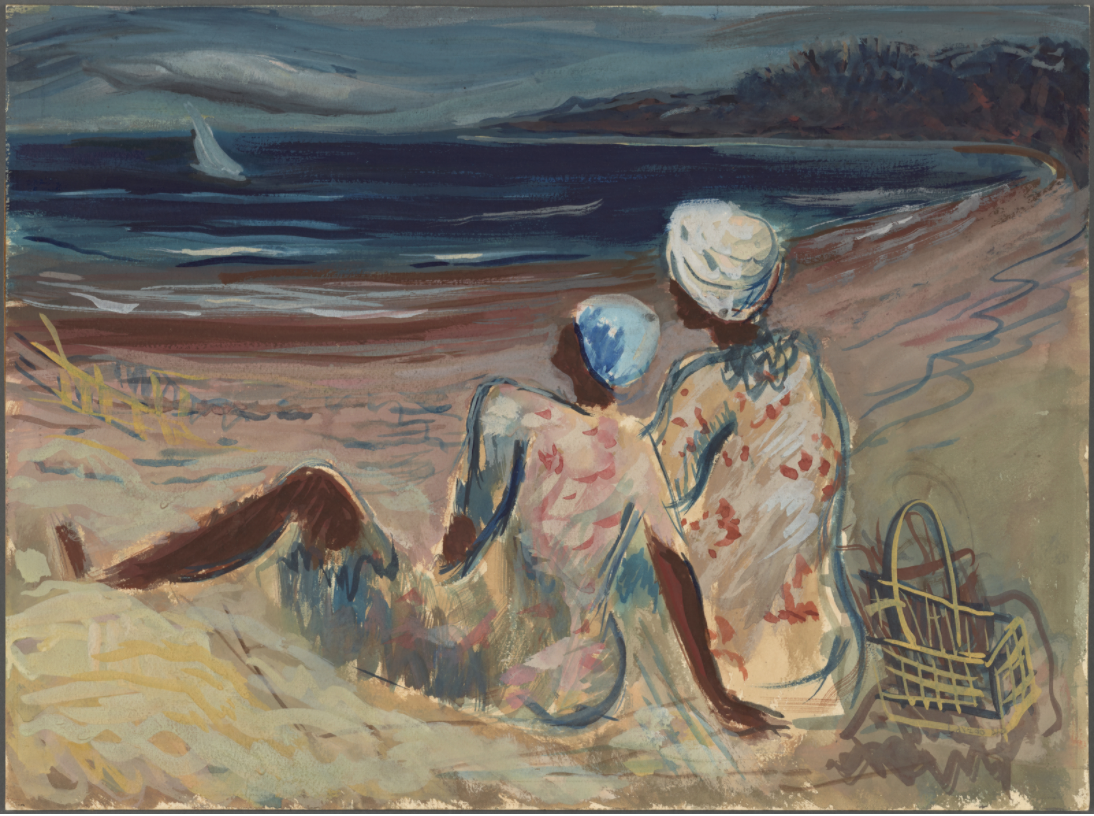Teach This Poem, though developed with a classroom in mind, can be easily adapted for remote learning, hybrid learning models, or in-person classes. Please see our suggestions for how to adapt this lesson for remote or blended learning. We have also noted suggestions when applicable and will continue to add to these suggestions online.

Look at the image of Victor Laredo's painting "On the Beach."
The following activities and questions are designed to help your students use their noticing skills to move through the poem and develop their thinking about its meaning with confidence, using what they’ve noticed as evidence for their interpretations. Read more about the framework upon which these activities are based.
-
Warm-up: Look closely at the image of the painting “On the Beach.” What do you notice? What might be going on in this image? Look again. What else do you see?
-
Before Reading the Poem: Read the title “The moon rose over the bay. I had a lot of feelings.” Predict what you think the next line might be about. From this title, what might the poem include? Why?
-
Reading the Poem: Read the poem “The moon rose over the bay. I had a lot of feelings.” by Donika Kelly silently. What do you notice about the poem? Annotate for any words or phrases that stand out to you or any questions you might have.
-
Listening to the Poem (enlist two volunteers to read the poem aloud): Listen as the poem is read aloud twice, and write down any additional words and phrases that stand out to you. Or, you may opt to listen to the poet read the poem.
-
Small-group Discussion: Share what you noticed in the poem with a small group of students. Based on the details you just shared with your small group, and your predictions from the beginning of class, what mood and tone does this poem convey? How does this compare to the image of the painting you viewed at the beginning of class?
-
Whole-class Discussion: Why do you think that the speaker in the poem writes their name in the sand? What might this represent? The title implies that the poem evokes “a lot of feelings.” How do you see emotion represented in the poem?
-
Extension for Grades 7-8: June is Pride Month and the author of this poem is a member of the LGBTQIA+ community. Continue reading more poems by LGBTQIA+ poets. Choose one LGBTQIA+ poet to read and explore. In honor of Pride Month, create a poster on a visual (or virtual) bulletin board honoring your chosen poet. If it is possible, share your poster with your classmates.
-
Extension for Grades 9-12: A cephalopod is another term for squid or octopus. Read the essay “My Cephalopod Year” by Aimee Nezhukumatathil, and write a personal essay in response.
In celebration of LGBTQ Pride Month in 2016, we asked poets to tell us about the poems that influenced their lives as LGBTQ writers and individuals. Read about the powerful and long-lasting impact poetry had on their identity.
This week’s poetic term is caesura, referring to a pause for a beat in the rhythm of a verse, often indicated by a line break or by punctuation. Read more terms.
